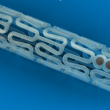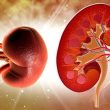Although there are 4 approved bioresorbable scaffolds (BRS) in Europe, experts suggest that current drug-eluting stents (DES) are the best option for coronary angioplasty. These new guidelines jointly published by the European Society of Cardiology (ESC) and the Association of Percutaneous Cardiovascular Interventions (EAPCI) are an update on the use of BRS in clinical practice<a href="https://solaci.org/en/2017/10/19/bioresorbable-scaffolds-must-not-be-chosen-over-current-des/" title="Read more" >...</a>
With Absorb Out, New Resorbable Scaffolds Have Come onto the Market
By restoring vascular physiology and eliminating the inflammatory focus and the chance of fracture and neo atherosclerosis inherent to DES, bioresorbable scaffolds offer the potential to improve long term outcomes. A number of bioresorbable materials have been tested, mainly polylactic acid, with several limitations that have taken the Absorb bioresorbable scaffold out of the market.<a href="https://solaci.org/en/2017/10/09/with-absorb-out-new-resorbable-scaffolds-have-come-onto-the-market/" title="Read more" >...</a>
Diabetics’ Silent Ischemia Myth Busted
Diabetes mellitus patients generally present more diffuse coronary disease, faster lesion progression and higher risk of restenosis after PCI. The way these anatomical differences translate into in a different clinical practice, compared to non-diabetic patients, remains unclear. Prior studies comparing the frequency of angina symptoms in diabetic vs. non-diabetic patients have arrived to contradicting outcomes,<a href="https://solaci.org/en/2017/09/29/diabetics-silent-ischemia-myth-busted/" title="Read more" >...</a>
It Is a Fact: Cerebral Protection in TAVR Has Proved to Reduce Stroke and Death
Cerebral ischemic events after transcatheter aortic valve replacement (TAVR) have been identified as independent predictors of morbidity and mortality. New-generation devices have managed to partially reduce the rate of cerebral events, but it still is around 5.5% at 30 days for patients undergoing TAVR through transfemoral access. First data on cerebral protection devices had only shown<a href="https://solaci.org/en/2017/09/29/it-is-a-fact-cerebral-protection-in-tavr-has-proved-to-reduce-stroke-and-death/" title="Read more" >...</a>
A New Opportunity for Renal Denervation
Courtesy of dr. Carlos Fava. At first, renal denervation enjoyed a considerable boost because, according to early studies, it lowered blood pressure (BP). However, after the results of the SYMPLICITY HTN 3 Trial its popularity decreased. Currently, the development of new technologies and greater operator experience may facilitate a change in this scenario. This<a href="https://solaci.org/en/2017/09/27/a-new-opportunity-for-renal-denervation/" title="Read more" >...</a>
Long-term results of the RESPECT study favor closure with the Amplatzer device
Courtesy of Dr. José Álvarez. The RESPECT trial is a multicenter randomized trial with blinded adjudication of end-point events. It randomly assigned patients from 18 to 60 years of age who had a patent foramen ovale (PFO) and a history of cryptogenic ischemic stroke to undergo closure of the PFO with the Amplatzer device plus medical<a href="https://solaci.org/en/2017/09/15/long-term-results-of-the-respect-study-favor-closure-with-the-amplatzer-device/" title="Read more" >...</a>
SYNTAX II: Better Stents, IVUS, FFR, or a Combination of All of Them to Catch Up with Surgery
In patients with 3-vessel disease, surgery obtained better outcomes than angioplasty, according to results from the SYNTAX and FREEDOM trials, which used first-generation drug-eluting stents. Even in the BEST trial, which used new-generation stents, surgery still offered far better outcomes. Nobody is surprised by the fact that, whenever angioplasty evolves due to a new device<a href="https://solaci.org/en/2017/09/13/syntax-ii-better-stents-ivus-ffr-or-a-combination-of-all-of-them-to-catch-up-with-surgery/" title="Read more" >...</a>
Polymer-Free DES Also Show Efficacy in Anticoagulated Patients with High Risk for Bleeding
Patients who receive chronic anticoagulation therapy and then undergo angioplasty are frequently discharged on a triple anti-thrombotic scheme that usually includes aspirin, clopidogrel, and warfarin. The optimal duration of this indication remains unclear, particularly for patients at high bleeding risk. According to expert consensus, patients receiving chronic anticoagulation may receive from 1 to 12 months of dual<a href="https://solaci.org/en/2017/09/08/polymer-free-des-also-show-efficacy-in-anticoagulated-patients-with-high-risk-for-bleeding/" title="Read more" >...</a>
VALIDATE-SWEDEHEART: bivalirudin seems to be losing ground
Another important work that does not see the benefits of bivalirudin over heparin as monotherapy as regards both efficacy (death and MI) and safety end points (bleeding) in patients undergoing acute myocardial infarction with and without ST elevation. The study VALIDATE-SWEDEHEART, presented at ESC, simultaneously published in the New England Journal of Medicine, randomized 6000 patients<a href="https://solaci.org/en/2017/09/04/validate-swedeheart-bivalirudin-seems-to-be-losing-ground/" title="Read more" >...</a>
RE-DUAL PCI: Anti-Thrombotic Management in Patients with Atrial Fibrillation and PCI
RE-DUAL PCI outcomes have been published by the New England Journal of Medicine along with their presentation at ESC 2017. The traditional triple anti-thrombotic scheme with dual antiplatelet therapy and warfarin for patients with atrial fibrillation undergoing coronary angioplasty seems to have been left behind. This new study showed that the combination of dabigatran with a P2Y12<a href="https://solaci.org/en/2017/09/04/re-dual-pci-anti-thrombotic-management-in-patients-with-atrial-fibrillation-and-pci/" title="Read more" >...</a>









